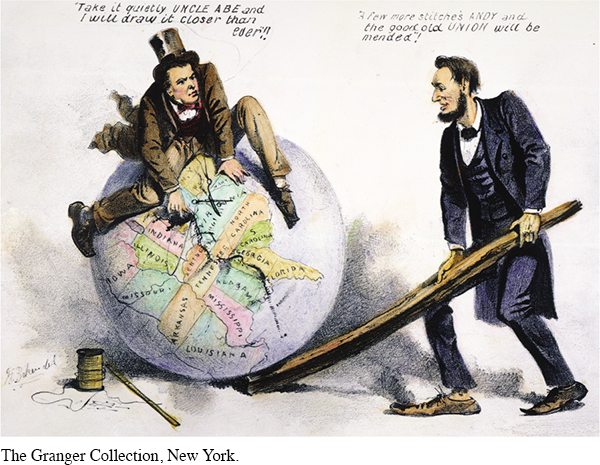The American Promise: Printed Page 441
The American Promise, Value Edition: Printed Page 403
The American Promise: A Concise History: Printed Page 460
“To Bind Up the Nation’s Wounds”
As early as 1863, Lincoln began contemplating how “to bind up the nation’s wounds” and achieve “a lasting peace.” While deep compassion for the enemy guided his thinking about peace, his plan for reconstruction aimed primarily at shortening the war and ending slavery.
Lincoln’s Proclamation of Amnesty and Reconstruction in December 1863 set out his terms. He offered a full pardon, restoring property (except slaves) and political rights, to most rebels willing to renounce secession and to accept emancipation. When 10 percent of a state’s voting population had taken an oath of allegiance, the state could organize a new government and be readmitted into the Union. Lincoln’s plan did not require ex-
Lincoln’s easy terms enraged abolitionists such as Wendell Phillips of Boston, who charged that the president “makes the negro’s freedom a mere sham.” He “is willing that the negro should be free but seeks nothing else for him.” Comparing Lincoln to the Union’s most passive general, Phillips declared, “What McClellan was on the battlefield—
The American Promise: Printed Page 441
The American Promise, Value Edition: Printed Page 403
The American Promise: A Concise History: Printed Page 460
Page 442
In July 1864, Congress put forward a plan of its own. Congressman Henry Winter Davis of Maryland and Senator Benjamin Wade of Ohio jointly sponsored a bill that demanded that at least half of the voters in a conquered rebel state take the oath of allegiance before reconstruction could begin. The Wade-
Undeterred, Lincoln continued to nurture the formation of loyal state governments under his own plan. Four states—